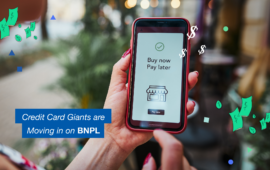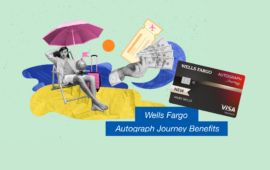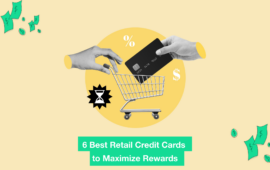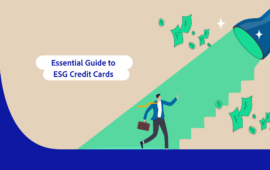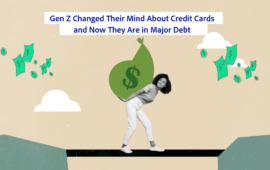How to Pay Off Debt Fast – Strategies and Tips
About Molly
Molly is a finance writer based in Portland, Oregon. She also covers software and environmental issues and is always on the lookout for a good vegan donut.
Read full bio
At a Glance
If you’re thousands of dollars in debt, it can seem impossible to pay it off. If you have different kinds of debt, it can be complicated and confusing to keep track of what you owe, when, and to what creditor. But getting out of debt has several benefits, both to your physical and mental health as well as your wallet.
Read on to learn more about:
To get started, you can use a debt payoff calculator to estimate how much you can save on interest, how different repayment options can help you save more money, and when you’ll be finished paying off your debt.
Tell us what you are looking for?
I am looking to calculate
I just have one
debt
I have more than
one debt
Best ways to pay off debt
If you’ve accumulated a lot of debt, you might be looking for creative ways to pay off debt quickly. Thankfully, there are several ways to consolidate debt. Each approach rolls multiple debts into one monthly payment:
1. Debt avalanche
How does it work?
With the debt avalanche method, you make the minimum payment on all debts, except the one with the highest interest rate. With this bill, you’ll pay as much as possible. Once you’ve cleared this debt, you’ll move on to the next highest interest rate. Again, you’ll repeat this process until all debt is paid off.
Each account you fully pay off allows you to put more money toward the next account since you’re eliminating the high-interest rates first. However, while this method is designed to save you the most money over time, you may not feel like you’re getting anywhere since cutting down interest expenses isn’t as satisfying as clearing a balance for good.
Who is it best for?
The debt avalanche method is best for people who have high-interest debt, like credit card debt. Paying these high-interest debts off first can help you save a lot of money over time.
To get started, try using a debt avalanche calculator.
2. Debt snowball
How does it work?
With the debt snowball method, you make the minimum payment on all debts, except the one with the smallest balance. With this bill, you’ll pay as much as possible. Once you pay off this debt, you move on to the next lowest balance, repeating until you’ve paid off all your debt.
This method is very motivational since it encourages small wins early in the debt repayment process, but it won’t save you as much money as the debt avalanche method since it doesn’t take into account interest rates, and taking longer to pay those off may cost more in the long run.
Who is it best for?
The debt snowball method is best for someone who needs more encouragement to stick to their debt repayment plan, and who finds it motivating to see their debt paid off one by one.
Test this method out on your situation with a debt snowball calculator.
3. Consolidate debt
By consolidating debts, you’re combining multiple debts into one more manageable debt, ideally with a lower interest rate. This can help you pay off your debts faster and easier while saving money on interest.
Get a debt consolidation loan
A debt consolidation loan is a low-interest personal loan that’s taken out to pay off high-interest debt. This helps you get out of debt faster, leaving you with just the loan to pay off in monthly installments.
There are different types of debt consolidation loans, but the most common is a personal loan.
The downside is that you may not get a better rate on your loan than your current debt, so be sure to compare interest rates to get the best option for you. Also, make sure you get a loan with a favorable repayment timeline.
Find and compare the best loan options.
Use the filters below to refine your search

Sorry, we didn’t find any options that meet your requirements. Please try modifying your preferences.
Congratulations! You’re close to seeing your offers!
Please take a second to review the details you shared earlier
Sorry, we didn’t find any options that meet your requirements. Please try modifying your preferences.
Use a balance transfer credit card
With a balance transfer, you move your credit card balance to a new card that has a lower interest rate. Many of these cards like Wells Fargo Reflect, Wells Fargo Active Cash, Citi Diamond Preferred Card, Discover it Balance Transfer have a 0% introductory APR, meaning you don’t pay interest on the balance for a certain period (typically 12 to 24 months). The new card is used to pay off the owed balance of your old card.
Note that you may have to pay a balance transfer fee, though in most cases the amount you can save with the transfer is greater than the fee. Also know that the 0% interest rate is temporary, and it’s important to pay off the balance in full before the introductory period ends or you may be hit with a high rate.
Learn more: Balance Transfer Credit Cards
Borrow from your 401(k)
A 401(k) loan allows you to borrow money from your retirement savings and pay it back to yourself over time, plus interest. You can typically borrow up to 50% of your balance for up to five years, for a maximum of $50,000, but this depends on your particular plan.
The interest rate is typically the current prime rate plus 1%, but any interest you owe you’ll be paying back to yourself.
The benefits of a 401(k) loan are that they typically have flexible repayment options and low or non-existent lending costs. Additionally, borrowing funds usually have a neutral impact on your retirement fund because you’re paying the money back with interest (unless you borrow during a bull market).
The primary downsides are that if you lose or leave your job, you must repay the remaining balance within a short period. Or, depending on the market, you could be missing out on retirement fund growth.
Tap into home equity loan
Home equity is the amount of your home that’s been paid off, calculated by taking the market value of your home minus any outstanding mortgages. It can increase either by the market value of your home going up or by paying more money toward your mortgage.
A home equity loan (HEL) is a loan that uses your home as collateral, and you pay back the loan in fixed monthly payments. The amount you can borrow depends on factors like your home’s current market value, your creditworthiness, income, and more. Essentially a second mortgage, this loan comes with predictable monthly payments and fixed interest rates.
A HEL can be used to help pay off debt, but know that if you aren’t able to repay the HEL on time, you could lose your home.
Learn more: How Does a Home Equity Loan Work?
Cash out refinance
If you’re a homeowner, you can replace your current mortgage with a larger one to help consolidate your debt. You get the difference in value between the old and new mortgage in cash, and you can use that money to pay off your debt. A cash-out refinance is different from a second mortgage because you’re not adding a monthly payment—you’re just replacing your current mortgage.
Learn more: What is a Cash-Out Refinance?
Debt relief options
1. Debt management plan
If your debt is continuing to rise and you feel overwhelmed, consider a debt management plan. Debt management plans, offered by credit counseling agencies, can help you pay back your unsecured debts by putting you on a repayment plan. You may pay lower interest rates, and could even improve your credit score. Plus, you only need to make one payment per month and you could pay off your debt faster.
On the other hand, you can’t take out any new credit and you may be asked to close current credit accounts, which could hurt your score. Not every creditor accepts debt management plans, and it could take three to five years for the plan to work.
2. Debt settlement
Try calling creditors to negotiate a debt settlement. You may be able to offer a lump sum and pay off much less than you owe.
You can also use a debt settlement company to negotiate for you, for a fee that’s often 15-20% of your debt. However, if you choose this method, use caution. Debt settlement hurts your credit score, and many companies offering this service are unreputable. Plus, the fees you owe could quickly add to your debt, especially because it’s not guaranteed your debt will be settled.
Related: How Debt Settlement Works
3. Bankruptcy
The two most common types of bankruptcy are:
- Chapter 7: This type of bankruptcy is fast, sometimes getting your debt discharged in less than 90 days. It’s relatively cheaper than Chapter 13, but you may lose your assets and meet certain qualifications. Chapter 7 bankruptcy will remain on your credit report for 10 years.
- Chapter 13: this takes much longer and the cost is somewhat significant, but your assets may be safe and there isn’t an expected monthly payment obligation. Most people qualify and this stays on your credit report for seven years.
Related: Is it better to pay off debt or declare bankruptcy?
Tips to get out of debt fast
Before you start on a debt payoff journey, you first need to stop the problem at the source. That means stopping adding unnecessary expenses to your credit cards. To make it happen, you may need to implement minor habit changes, such as:
- Removing your credit card numbers from being stored on your web browser.
- Implementing a 24-hour rule on all online purchases.
- Not carrying credit cards to a store when you’re just browsing.
Each of these strategies can help you limit expenses throughout the month and decrease your overall debt burden over time, ultimately helping you get out of debt quickly.
1. Know how much debt you have
To pay off debt, you need to know how much you owe. Get your credit report and credit scores, as well as your most recent credit card and loan statements. Use the credit report to verify your recorded debts are accurate. Your credit score will help determine if you qualify for lower interest rates.
Tip: Look for a free app that lets you link multiple accounts to view your debt. You can also put the info into a spreadsheet.
2. Create and stick to a budget
Create a budget to help keep your spending under control. Effective budgeting helps you make sure you have enough money to cover the necessities—like rent/mortgage, food, electricity, etc.—and then enough to start chipping away at your debt. Building a comprehensive budget is the first true step to paying off your debt because you need to know how much you’re spending, where you can cut expenses, and what you can realistically afford to put toward your debt each month.
By tracking your money and changing spending habits, you can free up cash to pay off debt faster:
- Calculate your income.
- Document your monthly expenses, including necessary and unnecessary expenses. Come to the best average you can for expenses that aren’t fixed each month. Common spending categories include housing, food, transportation, health, personal and family, finance, and others.
- Set realistic goals for how much you’ll put toward debt, where you’ll cut spending, or what you’ll do to increase your income.
- Track everything. You can use a pen and paper, a budgeting app, a spreadsheet, or another way that works for you. Create categories for each purchase to better understand what you’re spending and where.
- Make spending cuts where you can. Once you know where your money is going, figure out where you can eliminate spending and put those funds toward paying off debts. If your budget shows you’re spending more than you make, you’ll want to make some changes.
You could try following the 50/30/20 budget rule, in which you allot 50% of your budget to what you need, 30% to what you want, and 20% to your savings.
3. Find ways to spend less money
Small, daily purchases add up, which also means modest money-saving changes can help. Use your budget spreadsheet to find places where you could cut back.
Options could include cooking at home more and bringing your lunch to work. If you like going out, try taking advantage of happy hour pricing. Consider deactivating online streaming services or subscriptions you no longer use.
Checkout the full survey results here: How Young Americans Feel About The State Of Their Finances In 2022
4. Start a side hustle
Boosting your earnings isn’t easy, but it’s possible. Increasing your income is a great way to pay off debt because you can put all of your extra earnings toward your debt payments.
It’s estimated that one in three Americans have or plan to start a side hustle, and those additional funds can go a long way when it comes to repaying debt. Or, consider picking up extra hours at work or asking for a raise. You can also start a second job.
5. Pay more than the minimum balance
Credit cards, student loans, auto loans, and other types of debt require you to make a minimum payment each month to avoid fees. To pay off debt, you should try to pay more than the minimum balance.
If you have extra cash coming in from part-time jobs, side hustles, or unexpected gifts, consider immediately making a debt payment instead of waiting until you make your larger monthly payment. Doing so means you’ll be able to pay off debt more quickly and avoid paying interest on a higher balance.
6. Sell your stuff
You might also consider selling items you no longer use or gifts you’ve never opened. You can sell items online or through a local thrift store or consignment shop. Be sure to apply any of this extra money toward your debt.
7. Start an emergency savings account
Experts suggest you have 3-6 months of expenses saved in an emergency fund that you only tap into if there’s an emergency. Having these savings can keep you from getting further into debt due to unexpected costs.
8. Avoid credit card spending
When you aren’t accumulating more debt, you can pay off what you already owe easier. Even if you earn cash back or points on your card, avoiding spending more until you’ve paid off your current debt can help you move toward being debt-free.
9. Delete credit card auto-fill
If you’ve stored your credit card information on a retailer site, it makes the checkout process easier but makes spending easier too. You’re also more likely to buy things you don’t need because you don’t have to think about the purchase. By deleting your credit card information from sites where it auto-fills, you can avoid spending on your card and racking up more debt.
How paying off debt affects your credit score?
It takes some time for paid-off balances to be reported to the three credit bureaus (Experian, Equifax, and TransUnion) and then factored into your credit score, so your credit score may not benefit from debt payoff for a few months.
When you first pay off your debt, you may see a drop in your credit score, especially if you pay off a credit card and then close that account. When you close an account, you’re reducing the amount of available credit you have, which can increase your credit utilization ratio and hurt your score.
Typically, experts recommend a credit utilization ratio (the amount of revolving credit you are using compared to your overall credit limit) below 30%, and the lower, the better.
However, decreasing your debt can ultimately improve your score as long as you’re being responsible with your credit accounts. If you keep your credit card account open, a lower credit utilization will improve your score.
FAQs
Low income can add another layer of complication to your debt payoff journey. But, with savvy budgeting and a repayment strategy that makes sense for your current finances, paying off debt with low income is still very possible.
Learn more: How to Pay Off Debt with Low Income?
If credit card debt is what’s dragging you down, there are plenty of ways to pay it off quickly—and most involve lowering your interest rate. Popular strategies include getting a credit card debt consolidation loan, opening a balance transfer credit card, and paying with cash or debit while you knock out your credit card debts one by one.
Learn more: How to Pay Off Credit Card Debt Fast?
The rule of thumb is: If you can earn more on your investments than your debts will cost you in interest, maybe it makes more sense to invest. Our suggestion is to pay off that high-interest debt before gambling on risky investments, though. It’s also important to consider if high-risk investing and spending is what got you into debt in the first place. If that’s the case, debt payoff sounds like the way to go.
If you have the financial means, the best thing to do with your debt is to find a way to pay it off. There are so many different options available to you, depending on your income, credit score, and other factors. If you can’t find one that makes sense, you may need to decide between debt settlement and bankruptcy. Debt settlement might save you money, but it will hurt your credit and complicate your tax filing. Chapter 7 bankruptcy removes debt in just a few months but will also damage your credit. One advantage bankruptcy has is that creditors will not be able to sue you.
Learn more: Is it Better to Pay Off Debt or Declare Bankruptcy?
If you pay off debt before establishing savings, you’re probably going to rely on your credit card to cover unexpected expenses, which will only add to your debt. If you put money toward savings instead of debt payoff, you’re racking up interest payments over time. It sounds like a cop-out, but the ideal approach is to do both: pay off debt and save. And there’s so much more to the right answer than just that.
Learn more: Is It Better to Save or Pay Off Debt?
When it comes to paying off tax debt, you have a few options:
- Personal loan
- Credit card
- Mortgage refinance
- Installment agreement with the IRS
- IRS offer in compromise
Each method has its pros and cons, and you may not be able to use all the options listed above depending on your credit limit, credit score, and whether you own your home.
Learn more: How to Pay Off Tax Debt?
When you’re working to aggressively pay off debt, avoid traps like:
- Taking on new debt, even if the offer seems too good to be true
- Using emergency savings for debt repayment
- Buying things you don’t need to make other people happy
- Thinking being in debt is permanent
The most important thing to remember if you have no money or savings is to avoid taking on more debt. Borrowing money to pay off other debts, or taking on debt for unnecessary spending, can prevent you from reaching your debt-free goals. Don’t take on any more debt until you’ve paid off what you already have. It’s also important to create and stick to a budget so you know where you can cut spending and put more toward paying off your debt.
While poor credit may disqualify you from some debt repayment programs, such as debt consolidation loans or 0% interest balance transfer credit cards, there are other options available to you. Talking to your bank about options is a great first step. You may also want to consider debt management programs or debt settlement possibilities. Be sure to research the pros and cons before making a decision.
You can use your pension to pay off debt if you’re age 55 or older, have a personal or company pension you’re not currently paying into or receiving, and if you can, at any time in the future, be employed and be able to continue to work. However, you may be taxed on some of the withdrawn funds and you’ll be leaving yourself with a lower monthly income in the future.
Learn more: Can You Use a Pension to Pay Off Debt?

